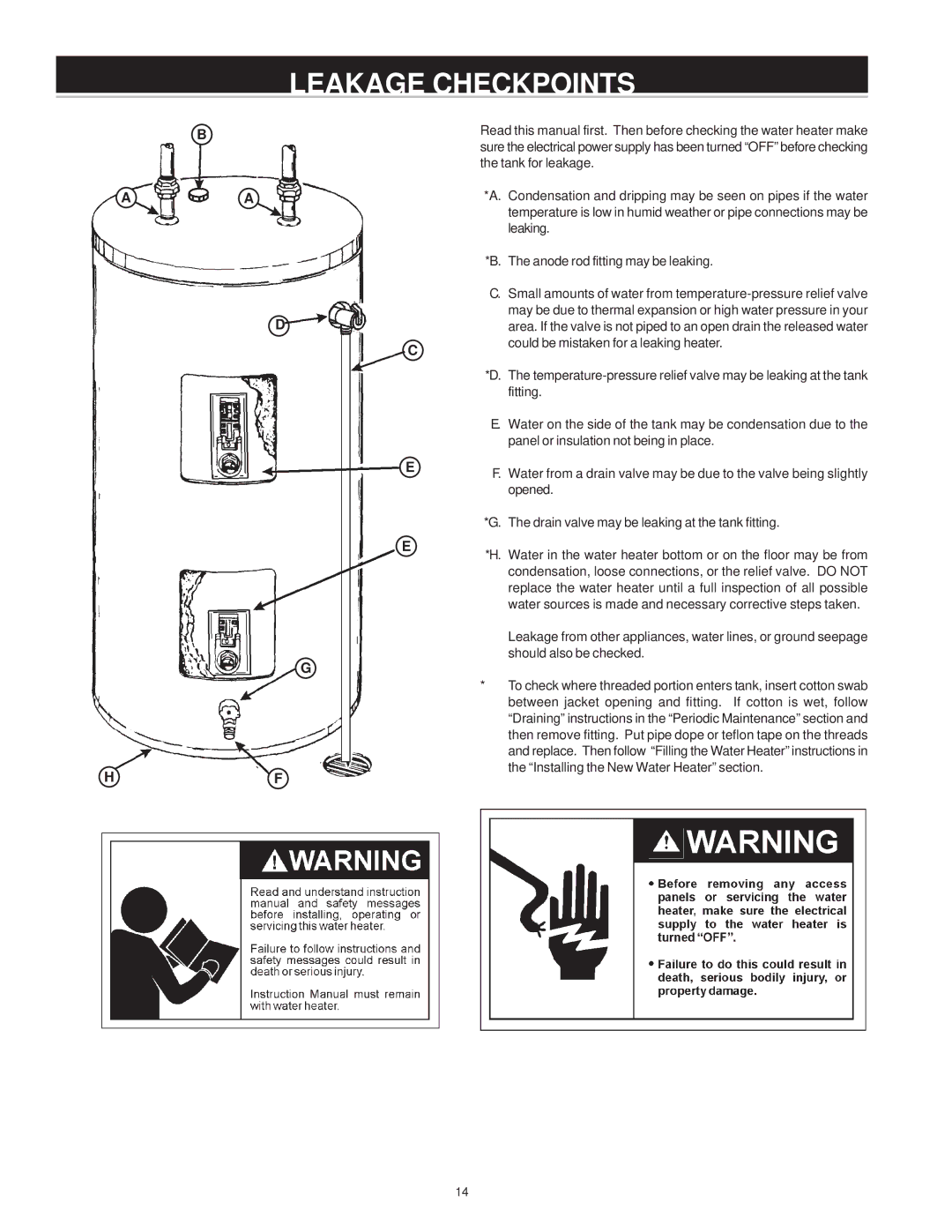
|
| LEAKAGE CHECKPOINTS |
|
|
|
| B | Read this manual first. Then before checking the water heater make |
|
| sure the electrical power supply has been turned “OFF” before checking |
|
| the tank for leakage. |
A | A | *A. Condensation and dripping may be seen on pipes if the water |
|
| temperature is low in humid weather or pipe connections may be |
|
| leaking. |
|
| *B. The anode rod fitting may be leaking. |
|
| C. Small amounts of water from |
D |
| may be due to thermal expansion or high water pressure in your |
| area. If the valve is not piped to an open drain the released water | |
| C | could be mistaken for a leaking heater. |
|
| |
|
| *D. The |
|
| fitting. |
E. Water on the side of the tank may be condensation due to the panel or insulation not being in place.
EF. Water from a drain valve may be due to the valve being slightly opened.
*G. The drain valve may be leaking at the tank fitting.
E*H. Water in the water heater bottom or on the floor may be from condensation, loose connections, or the relief valve. DO NOT replace the water heater until a full inspection of all possible water sources is made and necessary corrective steps taken.
Leakage from other appliances, water lines, or ground seepage should also be checked.
G
* To check where threaded portion enters tank, insert cotton swab between jacket opening and fitting. If cotton is wet, follow “Draining” instructions in the “Periodic Maintenance” section and then remove fitting. Put pipe dope or teflon tape on the threads and replace. Then follow “Filling the Water Heater” instructions in
HF
the “Installing the New Water Heater” section.
14
